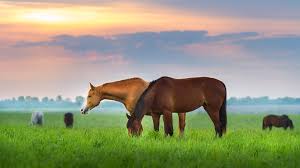Sugar Levels in Grasses
go.ncsu.edu/readext?675257
en Español / em Português
El inglés es el idioma de control de esta página. En la medida en que haya algún conflicto entre la traducción al inglés y la traducción, el inglés prevalece.
Al hacer clic en el enlace de traducción se activa un servicio de traducción gratuito para convertir la página al español. Al igual que con cualquier traducción por Internet, la conversión no es sensible al contexto y puede que no traduzca el texto en su significado original. NC State Extension no garantiza la exactitud del texto traducido. Por favor, tenga en cuenta que algunas aplicaciones y/o servicios pueden no funcionar como se espera cuando se traducen.
Português
Inglês é o idioma de controle desta página. Na medida que haja algum conflito entre o texto original em Inglês e a tradução, o Inglês prevalece.
Ao clicar no link de tradução, um serviço gratuito de tradução será ativado para converter a página para o Português. Como em qualquer tradução pela internet, a conversão não é sensivel ao contexto e pode não ocorrer a tradução para o significado orginal. O serviço de Extensão da Carolina do Norte (NC State Extension) não garante a exatidão do texto traduzido. Por favor, observe que algumas funções ou serviços podem não funcionar como esperado após a tradução.
English
English is the controlling language of this page. To the extent there is any conflict between the English text and the translation, English controls.
Clicking on the translation link activates a free translation service to convert the page to Spanish. As with any Internet translation, the conversion is not context-sensitive and may not translate the text to its original meaning. NC State Extension does not guarantee the accuracy of the translated text. Please note that some applications and/or services may not function as expected when translated.
Collapse ▲How long does it take for grasses to use up their sugar storage after the sun sets? Grasses build up sugar storage throughout the day by photosynthesis. The sugar storage allows the grass to continue to grow though the night. The sugar level varies due to numerous factors including weather, stress level of grass, maturity, time of year, and the time of day. Grasses have higher sugar levels later in the day compared to the early hours of the day. It takes several hours after the sun sets for sugar levels to drop. Sugar levels start building back up again with sun exposure.
For horses that have health issues that include sugar sensitivity, allotted time on grass is critical. These heath issues include insulin resistance, equine metabolic syndrome, and a history of laminitis. Horses with these health issues should graze in the early morning hours. It takes several hours for the sugar levels to drop after the sun sets, so avoid grazing before 3 a.m. Because sugar levels start to rebuild with sun exposure, removing sensitive horses from pasture by late morning is important. If there is substantial cloud cover, sensitive horses may graze longer due to slower photosynthesis and lower sugar levels. Another environmental factor that effects the sugar levels is temperature. When the temperatures overnight reach 40oF and below the plants growth rate slows and stored sugars are not used. This still is a risk for sensitive horses in the early morning hours because the sugar levels are high. It is always good to talk with a vet or nutritionist about a horse with sugar sensitivity and come up with a good grazing plan and supplemental feedstuff rations to keep horses as heathy as possible.
Another factor that plays a part in sugar levels is grass height. Most of the sugar is stored in the bottom 3-4 inches of the plant. It is easy to think that an over grazed pasture would be safe because “there is nothing out there”. Stressed pastures where only the lower part of the plant is available means high sugar levels. This is why rotational grazing is crucial for pastures. Adequate rest periods allow grass to regrow and horses are able to graze the taller less sugary parts of the forage. It is better for the plant and horse to stop grazing pastures at 3-4 inches. This not only lowers sugar intake by the horse but also allows the plant enough leave structure to enable regrowth.
With an understanding of pasture grass metabolism and good pasture and grazing management, many horses should be able to graze at least part of the day. If a horse has a sugar sensitive health concern, always consult with a vet or an equine nutritionist for the best grazing plan with supplemental feedstuff rations. A Cooperative Extension Livestock Agent is also capable of helping form a grazing plan after a horse owner has consulted with a vet. The Livestock Agent will be useful in providing information on grass varieties and when to plant for different growing seasons.




